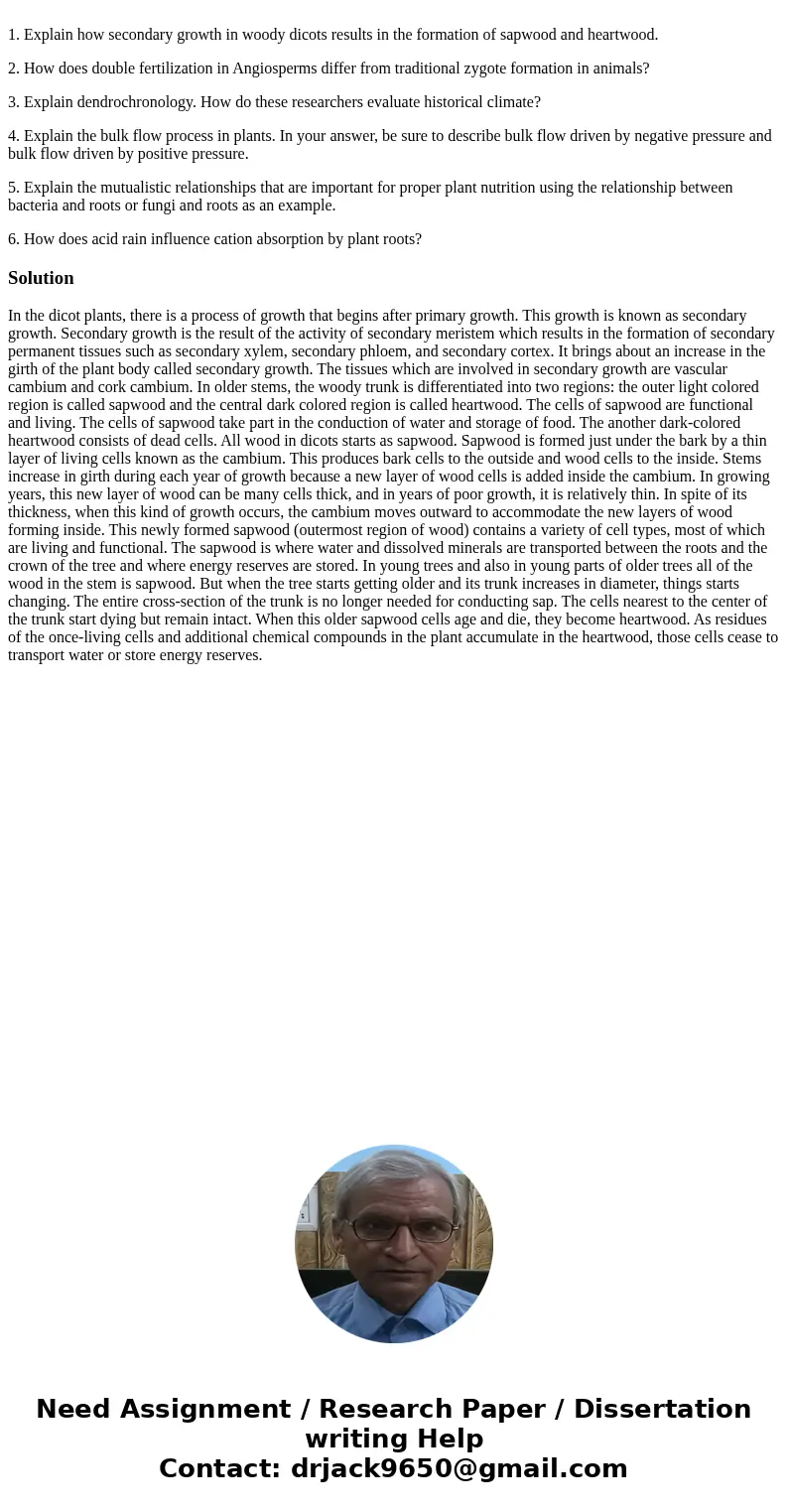1 Explain how secondary growth in woody dicots results in th
1. Explain how secondary growth in woody dicots results in the formation of sapwood and heartwood.
2. How does double fertilization in Angiosperms differ from traditional zygote formation in animals?
3. Explain dendrochronology. How do these researchers evaluate historical climate?
4. Explain the bulk flow process in plants. In your answer, be sure to describe bulk flow driven by negative pressure and bulk flow driven by positive pressure.
5. Explain the mutualistic relationships that are important for proper plant nutrition using the relationship between bacteria and roots or fungi and roots as an example.
6. How does acid rain influence cation absorption by plant roots?
Solution
In the dicot plants, there is a process of growth that begins after primary growth. This growth is known as secondary growth. Secondary growth is the result of the activity of secondary meristem which results in the formation of secondary permanent tissues such as secondary xylem, secondary phloem, and secondary cortex. It brings about an increase in the girth of the plant body called secondary growth. The tissues which are involved in secondary growth are vascular cambium and cork cambium. In older stems, the woody trunk is differentiated into two regions: the outer light colored region is called sapwood and the central dark colored region is called heartwood. The cells of sapwood are functional and living. The cells of sapwood take part in the conduction of water and storage of food. The another dark-colored heartwood consists of dead cells. All wood in dicots starts as sapwood. Sapwood is formed just under the bark by a thin layer of living cells known as the cambium. This produces bark cells to the outside and wood cells to the inside. Stems increase in girth during each year of growth because a new layer of wood cells is added inside the cambium. In growing years, this new layer of wood can be many cells thick, and in years of poor growth, it is relatively thin. In spite of its thickness, when this kind of growth occurs, the cambium moves outward to accommodate the new layers of wood forming inside. This newly formed sapwood (outermost region of wood) contains a variety of cell types, most of which are living and functional. The sapwood is where water and dissolved minerals are transported between the roots and the crown of the tree and where energy reserves are stored. In young trees and also in young parts of older trees all of the wood in the stem is sapwood. But when the tree starts getting older and its trunk increases in diameter, things starts changing. The entire cross-section of the trunk is no longer needed for conducting sap. The cells nearest to the center of the trunk start dying but remain intact. When this older sapwood cells age and die, they become heartwood. As residues of the once-living cells and additional chemical compounds in the plant accumulate in the heartwood, those cells cease to transport water or store energy reserves.
 Homework Sourse
Homework Sourse